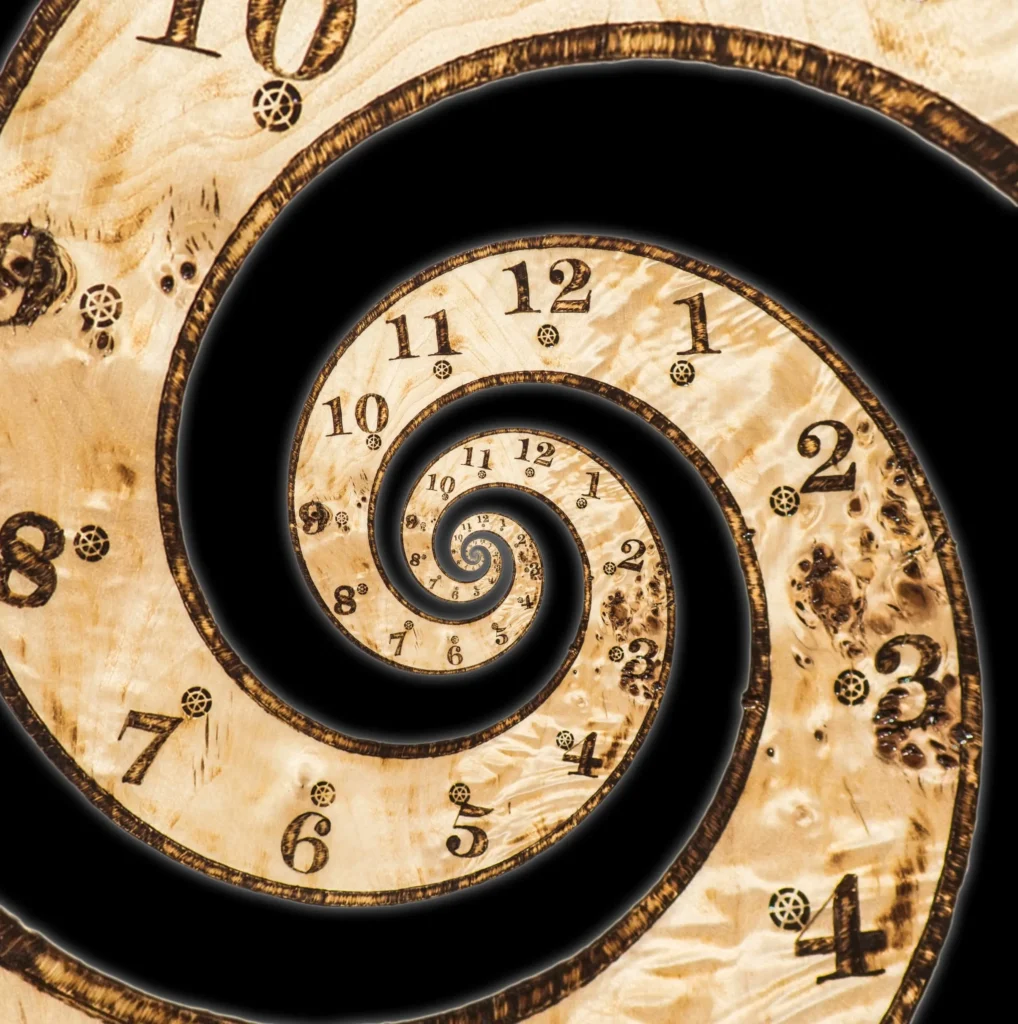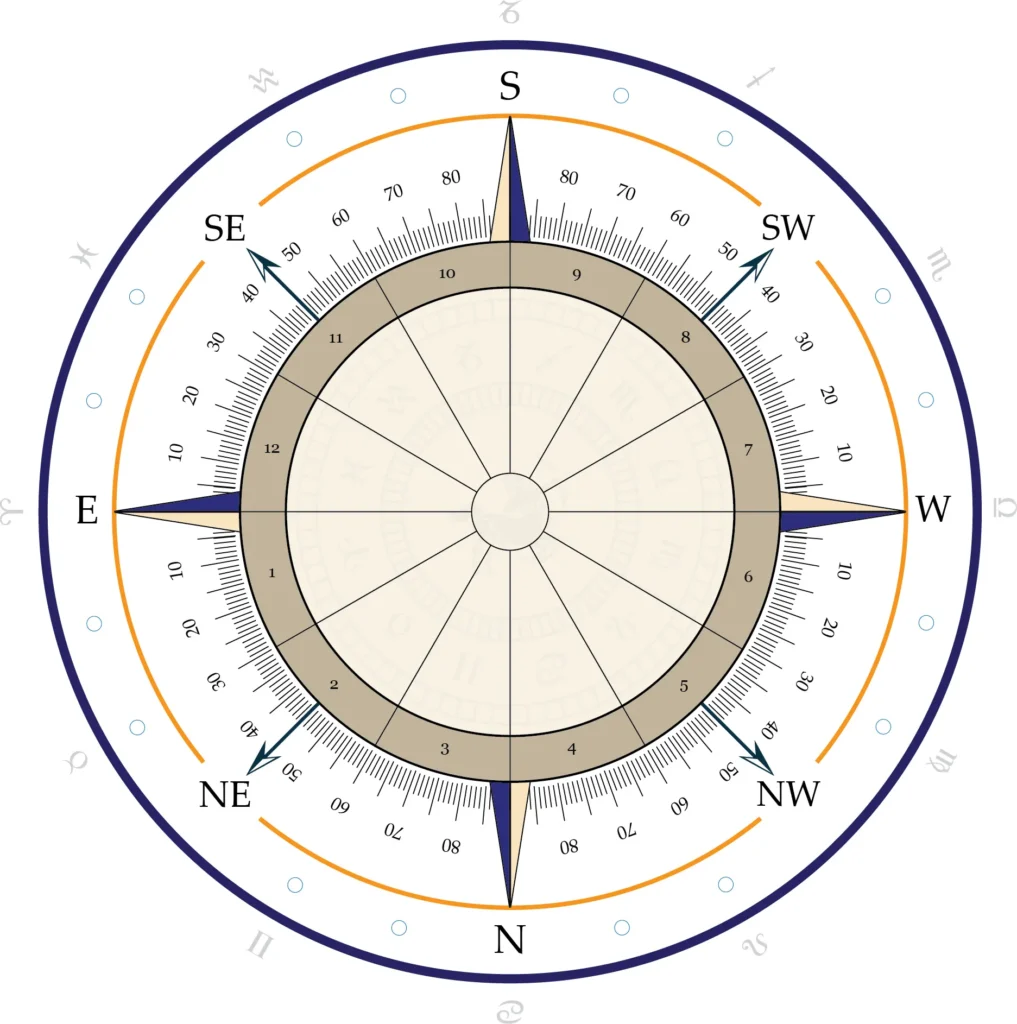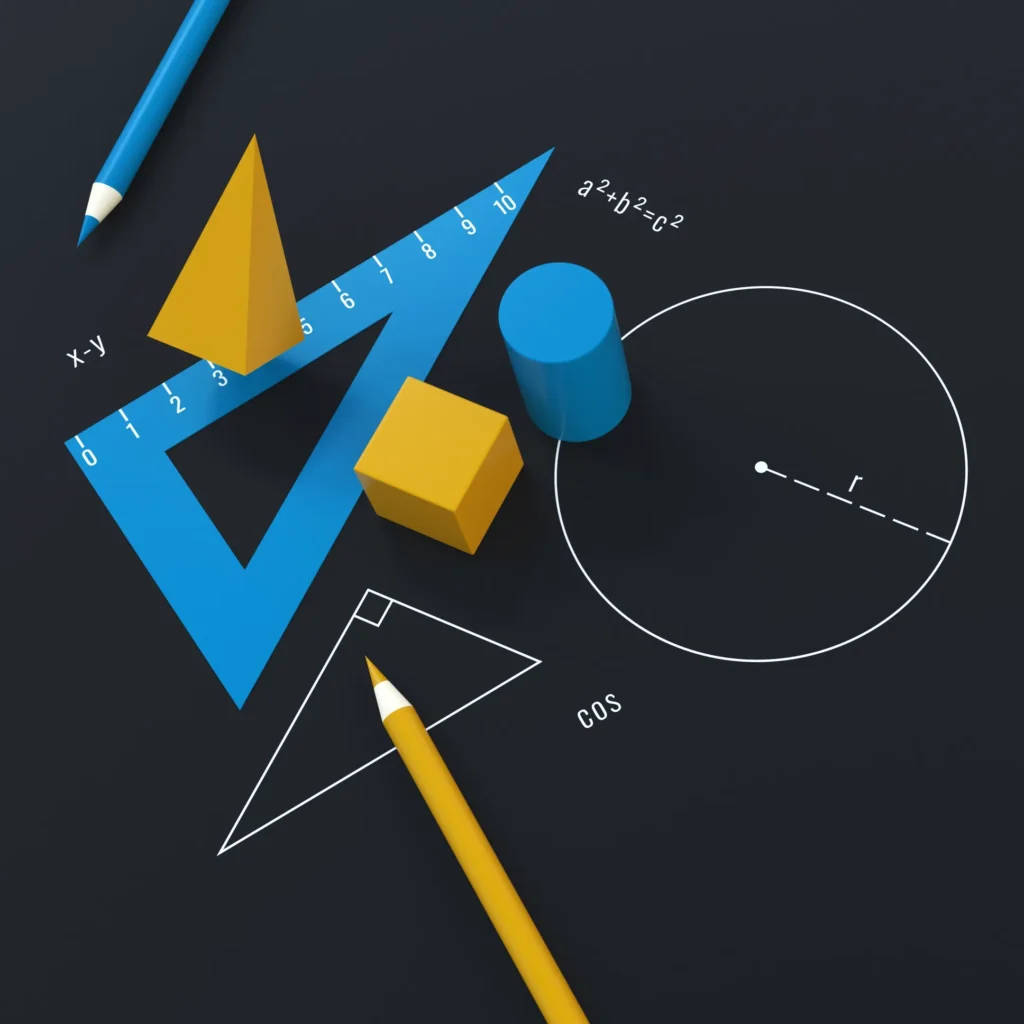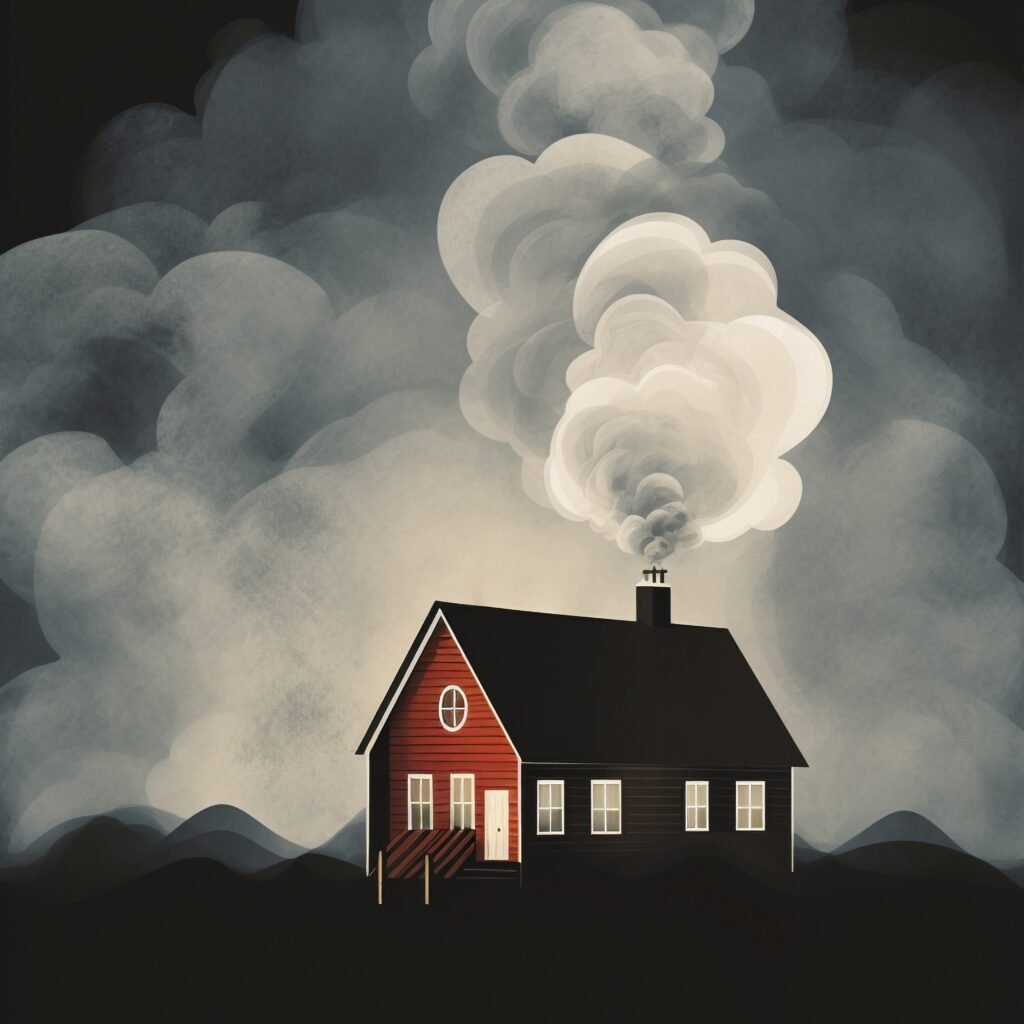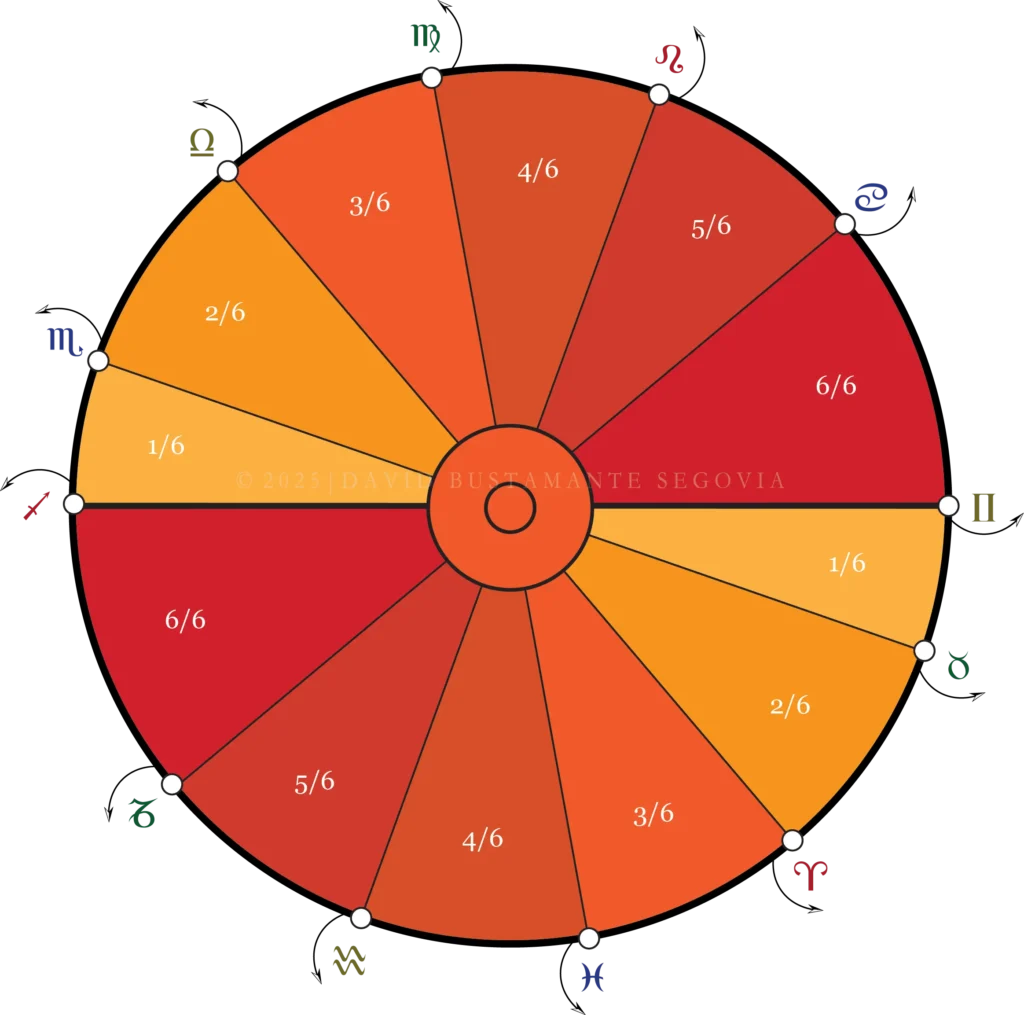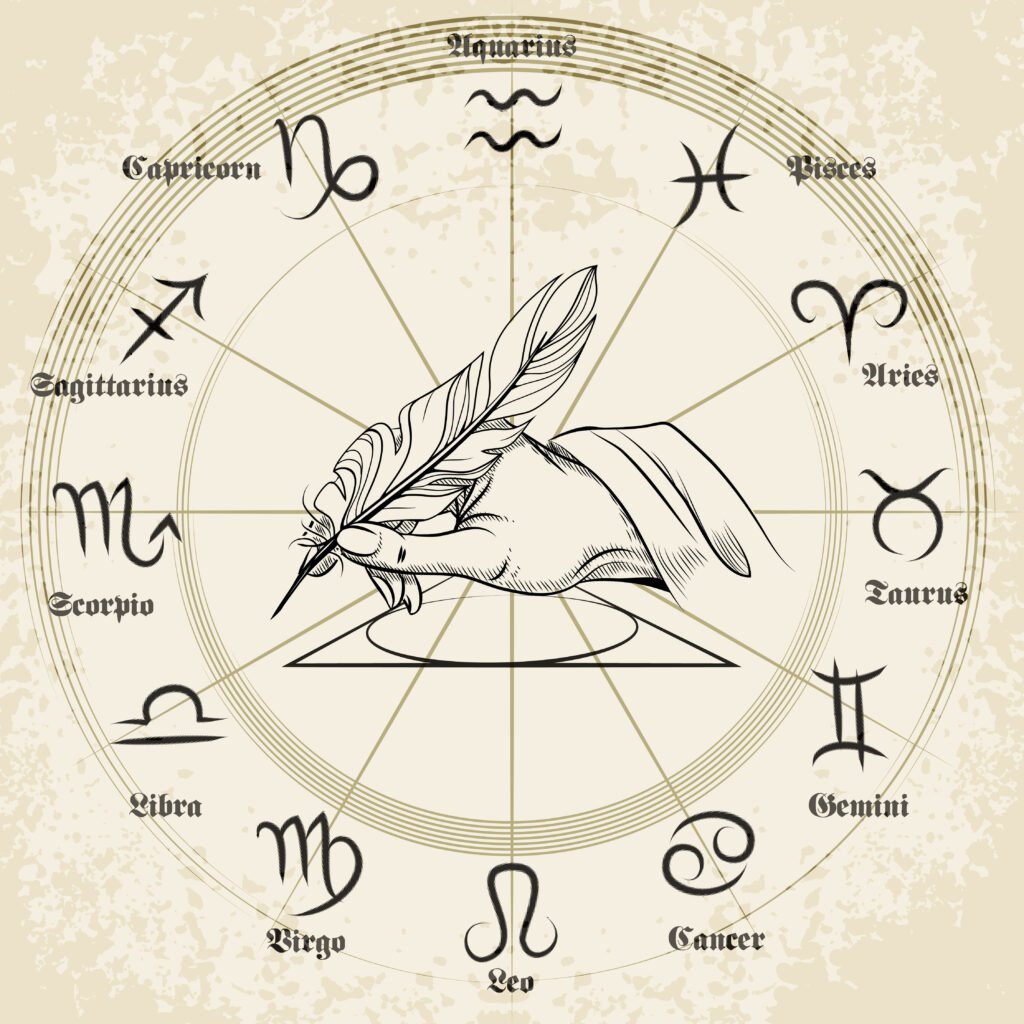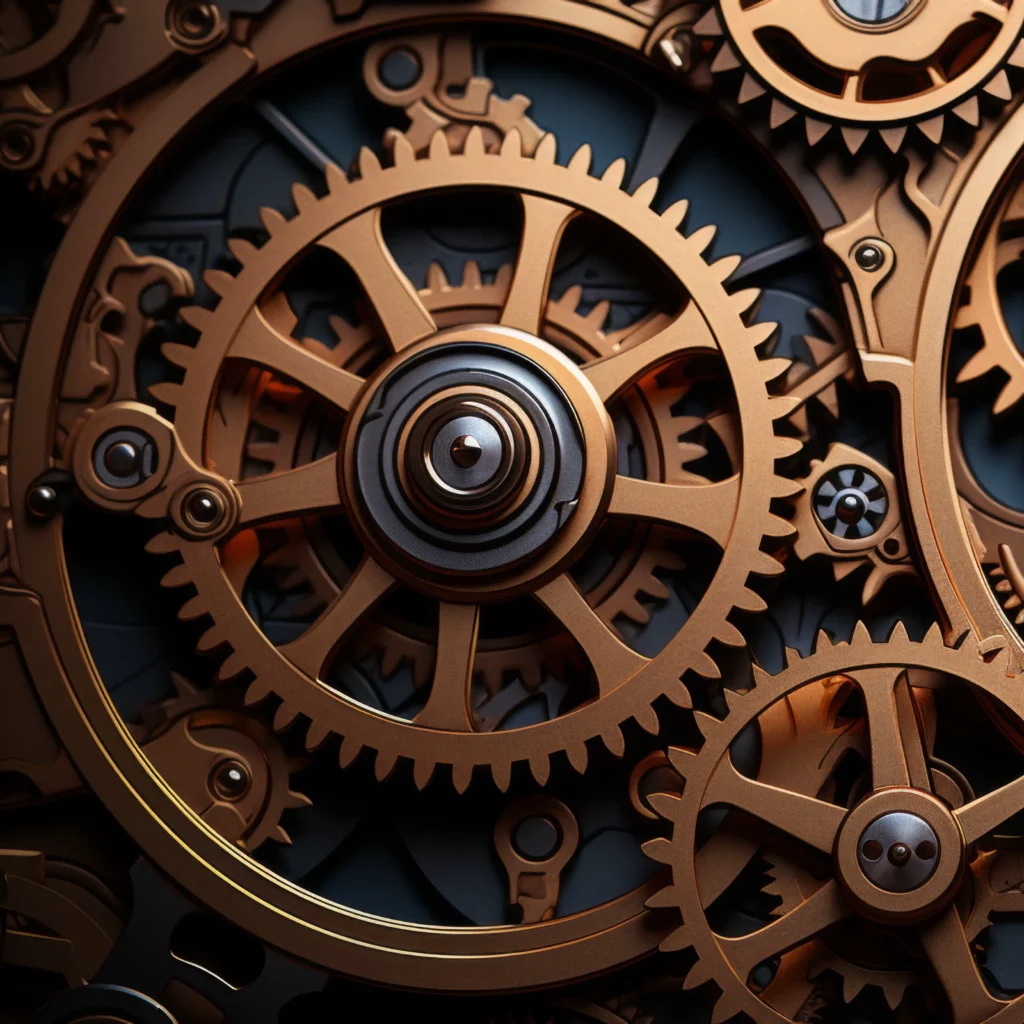Introduction
Derived analysis is the analysis that derives or draws from any house of the astrography in order to establish a new symbolic or imaginary chart, the starting point of which is that house. Should we look to obtain, for example, the symbolic or imaginary chart or astrography of the profession or trade, we would take the tenth house as the first house of our professional life; the second from the tenth (11th house), on the other hand, as the house of the salary or fees derived from the profession or trade; the third house from the tenth, in turn, as the house of communications occurring or taking place in our profession or trade; the ninth, that of travels, if any, related to said trade; and so on. On the other hand, if we wished to auscultate the life of the first child born, we would take the fifth house as the first house of that son or daughter, successively, until we complete the derived analysis cycle in the fourth house, which becomes the twelfth house of that child.
The verification exercise
The best proof of the validity or usefulness of derived analysis lies in the fourth and tenth regions of the astrography, which we know as the houses of private life (home) and public life (profession or trade), respectively. These are, however, also the houses where the father and the mother “reside” or “dwell”[1], as every child is the product of a union between two (Houses 1st and 7th as per derived analysis). Although it is true that the fourth house offers information about domestic affairs or the home in general, when it comes to individualising each parent, it is necessary to separate or distinguish one house from the other, as each one functions as the symbolic or imaginary 1st House of each parent[2].
In each astrography, the father/mum will appear in the region (fourth or tenth) that corresponds to the role he or she takes or plays in the life of that particular child. This is the reason why, in the astrographies of two or more siblings, the father may appear in the tenth house of one, while in the astrography of another or the others, in the fourth house (not all siblings will present or show either father or mother in the same house)[3]. Should dad play a role akin to the natural theme of the fourth house (a figure closer to affection or care than to authority or structures), then dad is likely to appear in the fourth house, not the tenth, in which case he is represented by the ruling planet of the fourth house, not the tenth (in the same way that any native is represented by the planet that rules his rising sign), and vice versa, i.e., if the said son held a relationship with his mother that is in line with the natural theme of the tenth house (a figure closer to authority or structures than to affection or care), then it is likely that his mother would appear in the tenth house, not the fourth, in which case she would be represented by the ruling planet of the tenth house, not the fourth.
The interpreter will therefore have to describe both parents (taking the fourth/tenth house as the first symbolic one, successively, until the cycle of the derived analysis is complete at the twelfth house) in order for the querent to indicate to which of the two parents each of the two descriptions offered corresponds. Only in this way will the interpreter be able to determine who appears where and offer the corresponding information or message thereby.
Example

In the astrography of this person, born March the 30th of 2014 at 3:47 p.m. in Bogotá D.C., mother happened to be represented by the same planet that represents the individual, Mercury (Gemini and Virgo, the two natural signs of the body in question, loom over the tenth and first regions of this astrography). This tends to indicate that, at least physically (sometimes also personally), the native, or his or her genetics, is more similar to that parent than to the other (as long as the rest of the astrography does not contradict this). Thus, the astrologer could begin by asking the native to whom he or she is more physically and/or personally like: “Mum or Dad?” Once the native answers “Mum”, the astrologer will know that Jupiter (R4) in Cancer (in the 8th House from the 4th) represents the father and that Mercury (R10) in Pisces (in the 10th House from the 4th) represents the mother, or vice versa should the native had answered: “Dad”.
The astrologer may also ask, in order to confirm this, whether father and mother have a good relationship with each other, regardless of having stayed together, for Jupiter and Mercury hold a natural trine (both planets are in water signs, which declares compatibility, although only the first, Jupiter, is dignified, Cancer, its sign of exaltation, while the second, Mercury, is weakened, Pisces, the sign of its fall).
Once the practitioner has established that father is Jupiter and mother is Mercury, he can begin to read the rest of the astrography or imaginary birth chart of one of the two in order to provide more information about either of them and their relationship both with the native (child in common) and with each other. According to the example provided here, the relationship between both parents is described as favourable or harmonious, as well as that of the father with his son. The relationship of the latter to his mother, however, may not be clear, as mother and son are represented by the same planet, Mercury. In order to distinguish between them, it is therefore necessary to ask for the birth information of the parent (mother in this case). However, it tends to indicate that the native and the parent are physically close (in other instances or examples it may reflect overprotectiveness or attachment, either on the part of the child or on the part of the parent).
Conclusion
As to the astrographic interpretation, two things must be taken into consideration. First, that, as in all derived analysis, the interpreter must continue to derive from the 4th house (H1) to the 3rd (H12) in order to form a complete idea about one of the parents, and likewise from the 10th house (H1) to the 9th (H12) in order to form a complete idea in relation to the other parent (in the 10th house from the 4th, for example, which is the 1st natural, as well as in the 10th house from the 10th, which is the 7th natural, the interpreter will be able to obtain information about the profession or trade of the father or mother, as the case may be, especially if these houses host one or more celestial bodies). Secondly, the aspectual relationship (if any) of the ruling planet of each of these two houses (fourth/tenth) to the ruling planet of the native’s first house will provide information about the nature of the native’s relationship with each parent, because, just as the native is represented by the ruling planet of the rising sign, so the parents will be represented by the ruling planet of the sign that “rises” over the houses referred to above, fourth (H1/H7) and tenth (H1/H7). In fact, this is the way we individualise or identify actors or protagonists in a birth chart, regardless of whether it is a derived or a natural (non-derived) analysis[4].
_____________________
[1] That a house can signify or represent different things or characters simultaneously is a consequence or manifestation of what is known in physics as “quantum superposition”. This occurs when the same system or object simultaneously possesses two or more values of an observable quantity (e.g. position or energy of a particle). An electron, for example, exists in all its possible states or properties simultaneously (just as a certain astrographic region represents different matters simultaneously according to a derived or natural analysis). It is only when we observe and measure it (when we see or read the astrography) that it gives a specific result corresponding to only one of the possible expressions.
[2] Symbolic, we reiterate, for it is not the astrography of the father or the mother, but of the person who is the product of the union between them. Houses 4th and 10th are, as per derived analysis, no less than Houses 1st and 7th, for every child comes from a union between two human beings, a union or relationship which, we know, is represented by this axis. However, derived analysis, though valid and also revealing, reaches a point at which it is exhausted, much as an image loses resolution if we crop the photograph. We will return to this in another article or publication.
[3] This answers the objection of the distinguished American astrologer Robert Hand regarding derived analysis. He argues that it can become profoundly relative and brings up the example of the parents of two or more siblings. See page 311 in Horoscope Symbols (1981. Whitford Press).
[4] Should the practitioner not master interpretation, otherwise known as delineation, he or she will be able to “see” the parent in any house. In fact, he or she will be able to “see” any other issue in any house as well, and any predictive technique can become either valid or invalid.

